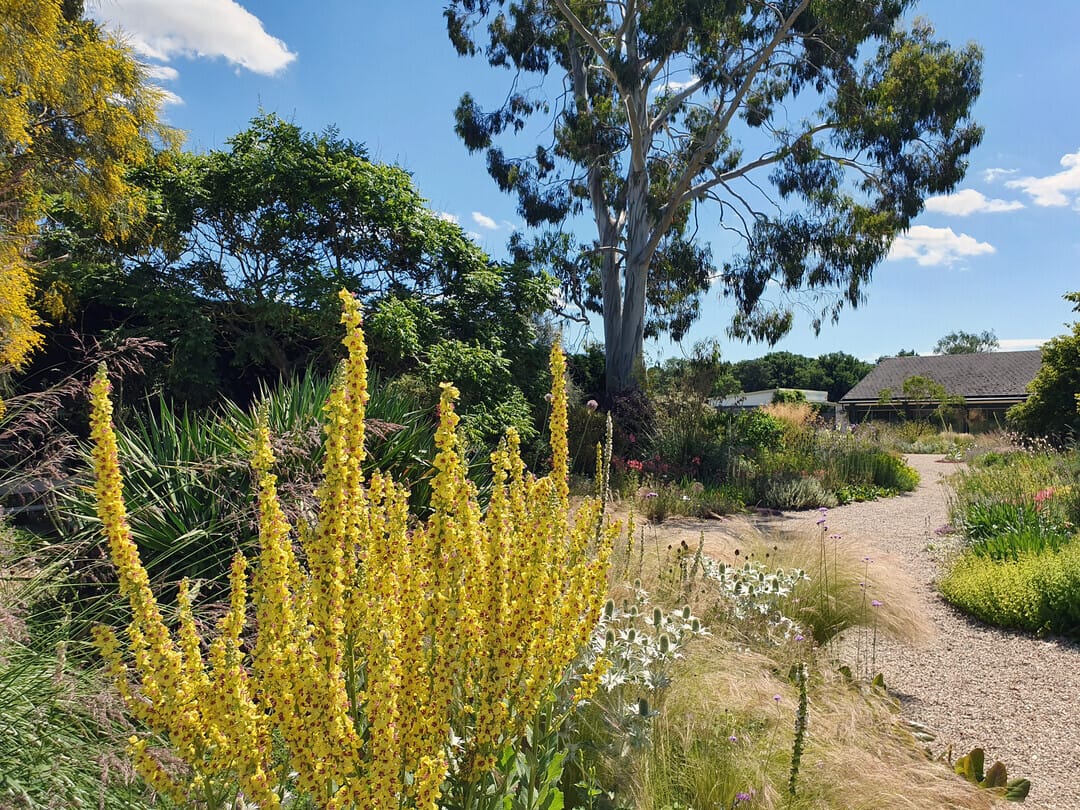- The Plot
- Posts
- The Secret to Effortless Midwest Gardens
The Secret to Effortless Midwest Gardens
Hint: It's beneath your feet.

Gravel Gardens: A Low Maintenance Revolution
On Tuesday, I attended a class hosted by Olbrich Gardens in Madison all about creating gravel gardens with the former Director of Horticulture Jeff Epping. Before entering Olbrich, you are greeted by a gravel garden at the entrance to the botanic garden filled with a natural style planting of Coneflowers, Spurge, and Smoke Bush. You don’t often see gravel gardens in the Midwest, as we lean towards wood or leaf mulch for our garden beds. However, there are an increasing number of successful gravel gardens in the Midwest due to the efforts of Jeff. These gardens do not just include a top dressing of gravel like typical mulch, but rather a matrix of 5-6 inches deep into which plants are planted. Gravel gardens, it turns out, require less water, chemicals, and labor than the traditional planting style.

Gravel garden at the entrance of Olbrich Botanical Gardens. Snapped on my way into the lecture.
The practice of using gravel in gardens has European roots. Mien Ruys (1904-1999), a Dutch garden designer, was an early pioneer of using washed gravel paving stones in her modernist designs. While more recently Beth Chatto (1923-2018) in the UK and Cassian Schmidt in Germany have created stunning gravel gardens, which inspired the work of our Midwest horticulturists Jeff Epping and Roy Diblik. Why are these gardens so unique? According to Jeff, “gravel gardens are less maintenance than any other type of garden.” So, using this planting technique, you can spend more time enjoying your garden and less time weeding and watering.
Notes from the lecture:
Purpose:
Gravel gardens require almost no water, are environmentally sound, and low maintenance. They are a unique lawn alternative, and a good way to feature our native prairie plants.
Construction:
You first need to establish a 6” border or edge. This keeps the gravel in the bed. You can use boulders, landscape pavers or existing concrete borders.
Remove existing plants and dig out about 5” of soil.
Add 5” of gravel. These should be ¼ to ⅜” washed quartzite chips or standard pea gravel.
Use plants ranging from plugs to quart sized pots.
Lay plants out in a naturalized random manner, or group them in drifts.
Keep the plants tightly spaced about 15” from the center.
Planting:
Select plants that are drought-tolerant prairie plants.
Remove excess soil from the root ball including the top 1 inch of soil where the weed seeds are.
Hand dig into the gravel and plant the plant so its crown is level with the top of the gravel. The roots will grow into the soil below.
Maintenance:
Water almost every day in the first weeks, then taper to 1-2 times after four weeks.
Year 2 & 3 you will only water during drought and after year 4 you only need to water during severe drought, or perhaps never again.
Cut back all the plants in the early Spring (March or April), and remove the debris to put somewhere else in your garden. The goal is to prevent organic matter from getting mixed in.

July in Essex, England. The gravel gardens of Beth Chatto.
A few plants for Midwest gravel gardens:
Grasses
Andropogon gerardii — Big Bluestem
Bouteloua curtipendula — Sideoats Grama
Schizachyrium scoparium — Little Bluestem
Forbs
Allium cernuum — Nodding Onion
Asclepias tuberosa — Butterfly Milkweed
Coreopsis palmata — Prairie Coreopsis
Dalea candida / D. purpurea — White and Purple Prairie Clover
Echinacea pallida — Pale Purple Coneflower
Gravel gardens can be used to set your space apart from other gardens while providing a respite from the never-ending task list that comes with gardening. Gravel is an underused structural element in landscaping in comparison to wood mulch, concrete, and green concrete (lawns). Plus it uses so much less water than a lawn. If it’s good enough for showcases at Olbrich Gardens, Epic Systems HQ, and the Chicago Botanic Garden – then surely you can give it a try!
Ken’s Almanac
Plant native trees and shrubs while the soil is still warm. Time passes much faster than you think, so it wont be long until you enjoy their generosity of shade or privacy.
Cut back spent annuals, but leave your sturdy perennials. They will provide shelter and food for birds and native bees through the Winter.
Mulch new perennials to help them through their first Winter. Tuck them in gently for the long rest.
Plotter’s Commons:
This is your newsletter, dear reader. So tell me… what do you want to read about? Reply to this email to let me know!
Native plants
Design
Houseplants
The author’s love life
DIY projects
Something else entirely
Community Board
Read: Devotions, Mary Oliver - I’ve been reading too many horticulture and design textbooks and needed some poetry to cleanse the palate.
Event 1: Moonlit Meadows, Olbrich, October 14th - This is another class I signed up for, and it is going to pair well with all the white bulbs I bought from their fall bulb sale.
Event 2: Webinar with Douglas Tallamy, October 16th - This is hosted by Wild Ones and it should be a great discussion with the author who has done so much to educate on the importance of using native plants.
Written for 165 beautiful readers. 💌
This newsletter grows best by word of mouth. Forward The Plot to an enemy that hates gardening.
Until next Thursday,
Ken Welch
Ken Welch is a horticulturist and research professional at UW–Madison. He’s drawn to native ecosystems, community gardens, and helping others grow confidence in their craft.
